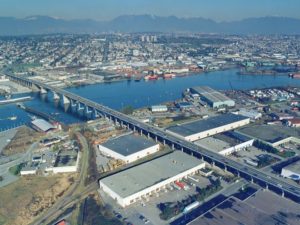Could “Smart” Bridges Be the Way of The Future?
August 30, 2022 |
Our Bridge Infrastructure is Aging
The 2021 American Society of Civil Engineers report card for America’s infrastructure found that the national backlog for bridge repair exceeded $125 billion. The report also found that 42% of all bridges were at least 50 years old and that 46,154 (7.5%) were considered structurally deficient. In Canada, the 2019 Canadian Infrastructure Report Card found that 9,661 (12.4%) bridge and tunnel structures were in poor or very poor condition. As North America’s bridge infrastructure continues to deteriorate, and a growing population pushes demand for mobility to new highs, researchers have recognized an opportunity to apply technology to support the operation and maintenance of these critical assets.

Sensor-Based Monitoring (SBM) of Bridge Assets
Much research over the past two decades has focused on the development of structural monitoring approaches to collect quantitative data relating to bridge performance (e.g., accelerations, displacements, strains). However, significant challenges remain surrounding how this data can be effectively used by asset owners and engineering consultants to assess bridge conditions and inform operation and maintenance decisions. As a result, the use of monitoring has largely been limited to academic studies and very targeted applications.
Key Questions
This raises a number of important questions: What is preventing the widespread use of sensors to monitor bridge infrastructure? And what information would a sensor system need to produce to prove to be useful for bridge owners and engineering consultants?
To investigate the answers to these questions, an anonymous survey was circulated amongst industry and academic participants to get their insights into the current state of the use of sensors for monitoring bridge infrastructure. KCB recently presented the findings of this survey at the 11th International Conference on Short and Medium Span Bridges.

Survey Results
Respondents identified a lack of knowledge about sensor-based monitoring (SBM) and a lack of requirements for regular bridge operation and maintenance as the primary reasons they had not previously used or implemented an SBM system. Respondents also felt that to be widely used and accepted in practice to support bridge operation and maintenance, an SBM system would need to offer the following benefits:- Provide monetary value in the form of reduced operation and maintenance costs,
- Locate and identify potential damage indicators,
- Estimate the likely remaining service life of the asset, and
- Reduce the bridge inspection frequency.
Next Steps
Based on the survey results, respondents felt that a useful SBM system should provide value to asset operators with minimal engineering analysis required for decision-making. Furthermore, asset operators should be able to quantify the accuracy of the information provided by an SBM system since they are ultimately responsible for invoking maintenance action. Sensor limitations and assumptions about SBM data could be quantified to develop confidence intervals for output data to further assist with decision-making. The potential for applying a mathematical framework to support decision-making related to operation and maintenance is worth exploring in future research. Similarly, the value of applying a reliability-based framework of analysis to SBM should be explored.
The large datasets produced by SBM systems over the life cycle of a bridge could lend themselves well to the application of artificial intelligence and machine learning algorithms to recognize trends and is worth exploring in future research. Given the amount of time needed to capture these datasets and observe changes in bridge performance, the effect of prolonged environmental exposure on sensor networks also merits further investigation.
To gain buy-in from asset owners, a cost-benefit analysis should be performed to determine the financial viability of proposed SBM packages over the life cycle of the asset. The installation and operation costs of the system should be compared against potential savings on operation and maintenance, and traditional bridge inspection costs. An SBM system designed to collect data from several different bridge components could be deployed in phases using a cost-benefit analysis to determine the optimal order and timing of installation for each sensing option.
Looking Ahead
With the rapid advancement of technology in the 21st century, many companies have realized that data generated by their operations can be collected and used to optimize their business practices. Advancements in the field of artificial intelligence have turned the once labour-intensive task of parsing large datasets into a powerful and increasingly accessible tool to help businesses improve their bottom line. In many cases, industries that fail to collect data to improve their business practices are falling behind in this competitive digital and technological landscape. It is imperative we do not allow bridge engineering to be one of those industries.
Read the full paper here.